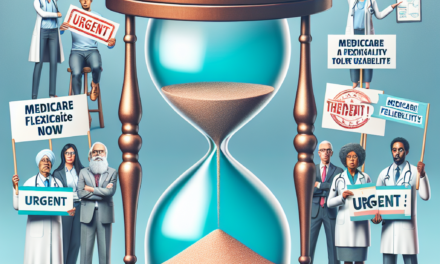Trump Administration Considers Revisions to Mental Health Parity Regulations
The Trump administration’s approach to mental health care has been a topic of significant discussion and debate, particularly regarding the regulations surrounding mental health parity. Mental health parity refers to the equal treatment of mental health conditions and substance use disorders in insurance coverage compared to physical health conditions. As the administration considers revisions to these regulations, it is essential to explore the implications, challenges, and potential outcomes of such changes. This article delves into the current state of mental health parity regulations, the proposed revisions, the impact on various stakeholders, and the broader implications for mental health care in the United States.
Understanding Mental Health Parity Regulations
Mental health parity regulations were established to ensure that individuals with mental health conditions receive the same level of care and coverage as those with physical health conditions. The Mental Health Parity and Addiction Equity Act (MHPAEA) of 2008 was a significant legislative milestone in this regard. It mandated that group health plans and health insurance issuers provide equal benefits for mental health and substance use disorders as they do for medical and surgical benefits.
Despite the progress made by the MHPAEA, challenges remain in the implementation and enforcement of these regulations. Many individuals still face barriers to accessing mental health care, including high out-of-pocket costs, limited provider networks, and discriminatory practices by insurers. The Trump administration’s consideration of revisions to these regulations raises questions about the future of mental health parity and the potential impact on millions of Americans.
The Current Landscape of Mental Health Care
The current landscape of mental health care in the United States is complex and multifaceted. According to the National Institute of Mental Health (NIMH), approximately 1 in 5 adults in the U.S. experience mental illness each year. This statistic underscores the importance of accessible and equitable mental health care. However, despite the prevalence of mental health conditions, many individuals do not receive the care they need.
Several factors contribute to the challenges faced by individuals seeking mental health care:
- Stigma: Stigma surrounding mental health issues often prevents individuals from seeking help. Many people fear judgment or discrimination, which can lead to delays in treatment.
- Insurance Coverage: Even with parity regulations in place, many insurance plans still impose higher deductibles and copayments for mental health services compared to physical health services.
- Provider Shortages: There is a significant shortage of mental health professionals, particularly in rural areas, making it difficult for individuals to access care.
- Complexity of Care: Mental health conditions often require ongoing treatment and support, which can be complicated by insurance limitations and bureaucratic hurdles.
These challenges highlight the need for continued advocacy and reform in mental health care, particularly as the Trump administration considers revisions to existing regulations.
Proposed Revisions to Mental Health Parity Regulations
The Trump administration’s proposed revisions to mental health parity regulations have sparked considerable debate among stakeholders, including mental health advocates, insurance companies, and healthcare providers. The administration has indicated a desire to streamline regulations and reduce the burden on insurers, which could have significant implications for mental health care access and quality.
Some of the key proposed revisions include:
- Flexibility for Insurers: The administration has suggested providing insurers with more flexibility in how they implement parity regulations, potentially allowing for variations in coverage and reimbursement rates.
- Reduced Reporting Requirements: Proposed changes may include reducing the reporting requirements for insurers regarding their compliance with parity regulations, which could hinder transparency and accountability.
- Focus on Cost Control: The administration has emphasized the need for cost control in healthcare, which may lead to policies that prioritize financial considerations over patient care.
While these proposed revisions aim to alleviate some of the regulatory burdens on insurers, they raise concerns about the potential erosion of mental health parity protections. Critics argue that increased flexibility for insurers could lead to discriminatory practices and reduced access to care for individuals with mental health conditions.
Impact on Stakeholders
The proposed revisions to mental health parity regulations will have far-reaching implications for various stakeholders, including patients, healthcare providers, insurers, and policymakers. Understanding the potential impact on each group is crucial for assessing the overall consequences of these changes.
Patients
For patients, the proposed revisions could result in both positive and negative outcomes. On one hand, increased flexibility for insurers may lead to more affordable insurance options for some individuals. On the other hand, reduced protections could result in higher out-of-pocket costs and limited access to necessary mental health services.
Patients may also face challenges in navigating the complexities of insurance coverage. If reporting requirements are reduced, it may become more difficult for patients to understand their rights and the benefits available to them. This lack of transparency could further exacerbate existing barriers to care.
Healthcare Providers
Healthcare providers, including mental health professionals, may also be affected by the proposed revisions. If insurers are granted more flexibility in their coverage decisions, providers may face challenges in securing reimbursement for their services. This could lead to a decrease in the number of providers willing to accept insurance, further limiting access to care for patients.
Additionally, providers may need to invest more time and resources in navigating the complexities of insurance coverage, which could detract from their ability to focus on patient care. The potential for increased administrative burdens may discourage some providers from participating in insurance networks altogether.
Insurers
For insurers, the proposed revisions may be seen as an opportunity to reduce costs and streamline operations. However, this could come at the expense of patient care and access to mental health services. Insurers may be incentivized to prioritize cost control over the quality of care, leading to potential disparities in coverage for mental health conditions.
Moreover, if reporting requirements are reduced, insurers may face less scrutiny regarding their compliance with parity regulations. This lack of oversight could result in a regression of the progress made in mental health parity over the past decade.
Policymakers
Policymakers play a critical role in shaping the future of mental health care in the United States. The proposed revisions to mental health parity regulations will require careful consideration of the potential consequences for patients, providers, and insurers. Policymakers must balance the need for regulatory flexibility with the imperative to protect access to quality mental health care.
As discussions surrounding these revisions continue, it is essential for policymakers to engage with stakeholders and consider the diverse perspectives and experiences of those affected by mental health conditions. This collaborative approach can help ensure that any changes to regulations prioritize the well-being of individuals seeking mental health care.
Case Studies: The Impact of Mental Health Parity Regulations
To better understand the implications of mental health parity regulations, it is helpful to examine case studies that illustrate the impact of these regulations on individuals and communities. These case studies highlight both the successes and challenges associated with mental health parity and provide valuable insights into the potential consequences of proposed revisions.
Case Study 1: Success in Accessing Care
One notable case study involves a young woman named Sarah, who struggled with anxiety and depression. After the implementation of the MHPAEA, Sarah found it easier to access mental health care through her employer-sponsored insurance plan. The parity regulations ensured that her mental health services were covered at the same level as her physical health services, allowing her to seek therapy without facing exorbitant out-of-pocket costs.
As a result of her access to care, Sarah was able to receive the support she needed to manage her mental health conditions effectively. She attended regular therapy sessions and participated in a support group, which significantly improved her quality of life. This case illustrates the positive impact of mental health parity regulations on individuals seeking care and highlights the importance of maintaining these protections.
Case Study 2: Barriers to Access
In contrast, another case study involves a middle-aged man named John, who faced significant barriers to accessing mental health care despite the existence of parity regulations. John had a history of substance use disorder and sought treatment through his insurance plan. However, he encountered numerous challenges, including high deductibles and limited provider networks.
Despite the legal protections afforded by the MHPAEA, John’s insurance plan imposed stricter limitations on coverage for substance use treatment compared to physical health services. As a result, he was unable to access the care he needed, leading to a relapse and further complications in his recovery journey. This case underscores the ongoing challenges faced by individuals seeking mental health care, even in the context of existing parity regulations.
The Future of Mental Health Parity Regulations
The future of mental health parity regulations remains uncertain as the Trump administration considers revisions that could significantly alter the landscape of mental health care in the United States. As stakeholders continue to advocate for equitable access to care, it is essential to remain vigilant in monitoring the potential impact of these proposed changes.
Several key considerations will shape the future of mental health parity regulations:
- Advocacy Efforts: Mental health advocates will play a crucial role in pushing for the preservation of parity protections and ensuring that any revisions prioritize patient care and access.
- Legislative Action: Policymakers may need to consider new legislation to strengthen mental health parity protections and address any gaps that may arise from proposed revisions.
- Public Awareness: Increasing public awareness of mental health issues and the importance of parity regulations can help mobilize support for maintaining and enhancing these protections.
Ultimately, the future of mental health parity regulations will depend on the collective efforts of stakeholders, advocates, and policymakers to ensure that individuals with mental health conditions receive the care and support they need.
Conclusion
The Trump administration’s consideration of revisions to mental health parity regulations presents both opportunities and challenges for the future of mental health care in the United States. While the proposed changes aim to reduce regulatory burdens on insurers, they raise significant concerns about the potential erosion of protections for individuals seeking mental health care.
As we have explored in this article, the current landscape of mental health care is marked by both progress and ongoing challenges. The success stories of individuals who have benefited from parity regulations highlight the importance of maintaining these protections, while case studies illustrating barriers to access underscore the need for continued advocacy and reform.
Moving forward, it is essential for stakeholders to engage in meaningful dialogue and collaboration to ensure that any revisions to mental health parity regulations prioritize the well-being of individuals with mental health conditions. By working together, we can strive for a future where mental health care is accessible, equitable, and effective for all.




